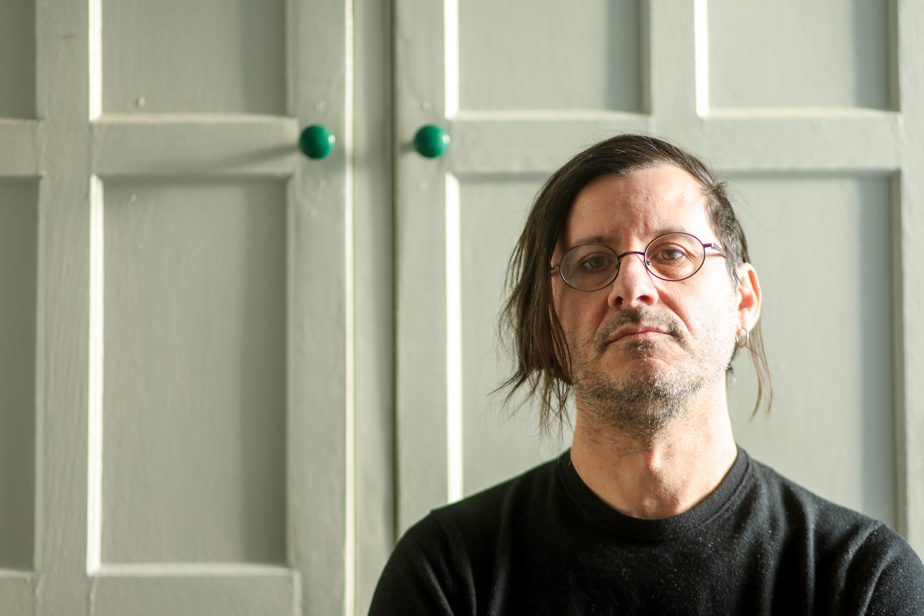With Little Gregory’s Revenge, Grégory Lemay obliquely criticizes a literary world obsessed with lived experience. But the writer, who has been publishing for 25 years, above all adds another slightly crazy novel to his patient and unparalleled work, which always likes to suggest and gently confuse rather than say everything.
The book is called Little Gregory’s Revenge, but that title is more of a red herring than an accurate description of what’s inside. Perhaps even a nice grimace, addressed to a time when everything in literature must always be considered in the light of an author’s experience.
It’s that Little Gregory’s Revenge, although partly inspired by a trauma rooted in childhood, is not really an autobiographical book. Barely. “There is a game in the title, perhaps even a form of criticism towards the literature of testimony,” explains Grégory Lemay in the darkness of the living room of his apartment in La Petite-Patrie.
On the way to his mother’s house, in the town of his childhood, a man tells his girlfriend about the attack he experienced in a wood, when he was still a kid. Then he adds the story, at first credible, then a little less, of the knife that he allegedly thrust into the throat of his executioner, in order to take revenge.
“But it’s above all a criticism of the reception, of what we do with a book,” Lemay continues gently, sipping his beer, under the gaze of a photo of his roommate’s father, hanging on the wall.

PHOTO FRANÇOIS ROY, THE PRESS
Gregory Lemay
It’s a sort of cry: Heille, why is it always necessary for a novel to have a function other than literary, a social utility? Can we still consider a novel as an aesthetic object without looking for the shocking revelation it contains, the scoop?
Gregory Lemay
Even in the space of the novel, a vagueness will therefore persist: did this murder actually take place? “And it is very important, this vagueness,” argues the writer, “because it is exactly the subject of the book: memory, what we think we have experienced, what we would like to have experienced. It is a book about the perception of things and oneself. That’s why it was essential to leave it open, not to resolve this enigma of humans who constantly revise and change their memories. »
Go beyond the concrete
It’s been a while since Grégory Lemay published a novel – it was The hearts of guinea pigs (Heliotrope) in 2016 – to the point where we thought we had lost it in the mist. The man who stubbornly refuses to reveal his age – “because I don’t have, socially, the life of someone my age, I like movement, I like going out, I like going dancing, I ‘I need my fix’ – has been publishing for 25 years: Me neitherhis first, dates from 1999. The summer novel (Leméac, 2007), undoubtedly his best book, will be brought to the cinema under the title 1+1+1 by Yanie Dupont-Hébert (filming took place last winter).
Despite his seven books, Grégory Lemay has never been anything other than a discreet writer, constructing plate by plate a patient work, in which he pretends to be interested in the little things of existence, before the The picture doesn’t blur and reality gets twisted, until you wonder what you’re reading.
His characters incubate in their hearts treasures of twisted and noble desires, like so many pretty poisonous plants. Like the great American school of short stories à la Raymond Carver, everything with him is always suggested, evoked, touched upon. And everything always ends up getting a little weird.
“My realism sometimes takes off from reality,” he observes. I like to start with a space, a very concrete situation, and stick to it for a certain time, before making it overflow into the symbol, into the fable, to give it a function other than the description of something everyday. . »
The naivety of the great Gregory
If the creation of Little Gregory’s Revenge was so long, it is in particular because Lemay felt the pressure to finally publish a proverbial real book of 400, 500 pages, of the kind which can serve as a barrier, while his own rarely exceed the 150 mark. After rereading , his manuscript deserved to be trimmed by half.
I like writing in which there is a tension, an electricity and I realized that this electricity disappeared when trying to do something more voluminous.
Gregory Lemay
But the eight years separating his previous book from the new one can also be explained because it was not easy to exhume this trauma from his memory. “I had to work sparingly,” he confides. At the beginning, I liked to think that telling this story was just a narrative choice like any other, but emotionally, psychologically, it was a lot tougher than expected. I was very naive to think that writing about it would desensitize me. »
Will writing have healed the wound even a little? Long silence. Broken by an unequivocal response. “Not all. It just served to remind me of this trauma. Once would have been enough, but the problem with a book is that you write it, you read it, reread it. If I wanted to fix this, I would have done better to go see a specialist. In other words, no, I don’t believe in the therapeutic properties of writing. »

Little Gregory’s Revenge
Del Busso
144 pages
